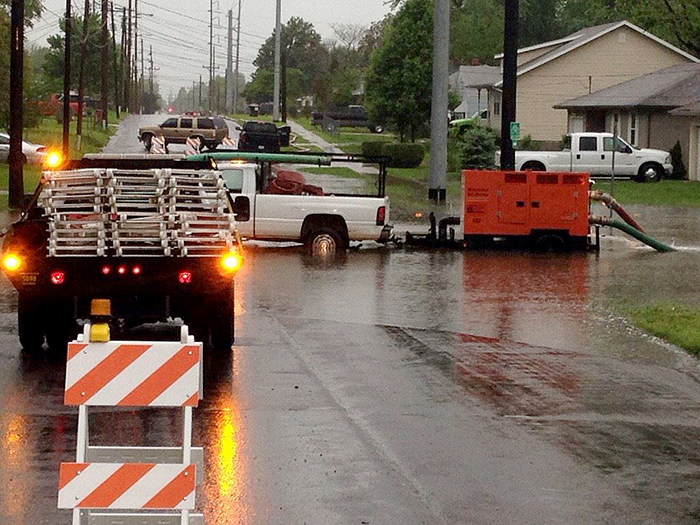In response to the widespread flooding that occurred in Greene County and throughout the Missouri Ozarks this past weekend, the Springfield-Greene County Office of Emergency Management (OEM) will activate its Public Information Call Center (PICC) Tuesday, May 2 and Wednesday, May 3 from 9 a.m. to 4 p.m. to collect flood damage reports.
Citizens in Greene County who have experienced flood damage to their homes, properties or businesses are urged to call the PICC at 417-829-6200 and submit a report. Damage reports received will assist in determining the overall flooding impact to Greene County from this weekend’s record-setting rainfall.
Health concerns
The Springfield-Greene County Health Department urges residents to use caution when cleaning up the mess left behind from historic regional flooding.
Floodwater can contain contaminants and unseen hazards. Caution should be exercised with anything touched by floodwater.
Below are more specific tips for dealing with food items, furniture and cleaning.
Food
- Throw away foods needing refrigeration if the electricity has been off for more than six hours.
- Don’t refreeze foods that have thawed. Discard them if they’ve been thawed for more than four hours.
- If food items have been in contact with floodwater, discard fresh meat and poultry, prepared and processed foods, home canned foods, packages that are not airtight and foods in paper containers.
Toss
- Large soft items that have been in contact with water for two or more days, such as couches, chairs, mattresses and carpet. Mold is growing on these items, even if you can’t see it.
- Wooden kitchen items.
- Leather or paper products.
- Medicines and cosmetics.
Save
- Bedding and other soft items should be washed in hot water with bleach.
- Take special care with children’s toys, utensils, dishware and other small items. Wash with soap and water and then disinfect by immersing for one minute in a solution of four tablespoons of bleach to two gallons of water.
- Pots and pans can be sterilized by boiling them for at least ten minutes.
- Items that are too large to immerse, or surfaces like walls, decking and doors should be washed with soap and water and then wiped down with a solution of one cup of bleach to one gallon of water.
Don’t forget your own safety
- Wear rubber gloves and rubber boots.
- Use eye protection and a mask while cleaning with bleach solutions.
- Be sure your home is well ventilated.
- Never mix bleach with ammonia or other cleaning solutions, as it may create toxic fumes.
- Make sure your tetanus vaccine is up to date. The bacteria that cause tetanus can get into the body through a puncture, cut, or sore of the skin via soil or muddy water. If you need your tetanus shot—it should be updated every 10 years. Contact your primary care physician or the Health Department’s Westside Public Health Center at 417-874-1220.
Also, to avoid electrical shock and damage to items, be sure any electrical appliances that have been in contact with floodwater are thoroughly cleaned, reconditioned and dry before operating them.


